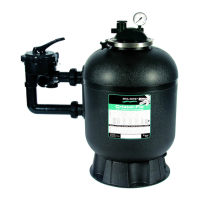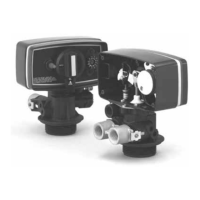Chemistry You Need to Know
1. Chlorine Stabilizer (cyanuric acid) is needed in outdoor pools to maintain proper levels of chlorine.
Most unstable chlorine is destroyed by the UV radiation from the sun within 2 hours. Chlorine
stabilizer should be maintained between 50 - 75 PPM. See Table 3, page 16.
2. Nitrates can cause extremely high chlorine demands and will deplete chlorine from your swimming
pool. In some cases Nitrates may even lower your chlorine levels to zero. The local pool professional
can test for Nitrates. Make sure Nitrates are not present in your pool.
3. Metals (some metals) can cause loss of chlorine. Also, metals can stain your pool. Have the local
pool professional check for metals and recommend methods of removal.
4. Chloramines should not be present in pool water. When organic materials combine with Free
Chlorine, Chloramines are formed. This ties up the “free” Chlorine in your pool and does not allow
the chlorine in your pool to disinfect. Chloramines also cloud pool water and burn the eyes. (Super
Chlorinate (shock) to remove Chloramines at the initial startup of the pool).
5. Super Chlorination (Shocking) burns out the organic material that has combined with chlorine. This
frees the chlorine for sanitizing. This is accomplished by raising the chlorine level quickly and
dramatically. When the chlorine level is raised to 5 to 15 PPM the pool water is said to have been
Super Chlorinated (shocked). As pool water is continuously passed through the electrolytic cell, all
pool water inside the cell is being Super Chlorinated. When IntelliChlor is used on pools, the pool
water sparkles and is less likely to contain chloramines.
Note: On initial start-up of a pool, it is best to Super Chlorinate from an outside source, i.e., use a
shock treatment available at your local pool supplier.
6. pH produced by IntelliChlor is close to Neutral pH. However, other factors usually cause the pH of
the pool water to rise. Therefore, the pH in a pool chlorinated by IntelliChlor tends to stabilize at
approximately 7.8. This is within APSP standards. If the pool pH rises above 7.8, have a pool
professional test to see if other factors such as high Calcium Hardness or Total Alkalinity are the
cause and then balance accordingly.
7. Total Dissolved Solids (TDS): Adding salt to pool water will raise the TDS level. While this does not
adversely affect the pool water chemistry or clarity, the pool water professional testing for TDS must
be made aware salt has been added for the IntelliChlor system. The individual performing the TDS test
will then subtract the salinity level to arrive at the correct TDS level. See Table 3, page 16.
8. New Pool Water: A recently filled or newly-refinished pool may contain undesirable matter. This
undesirable matter could interfere with IntelliChlor’s ability to chlorinate properly. Make sure the
water is tested by a pool professional and properly balanced before turning on IntelliChlor.

